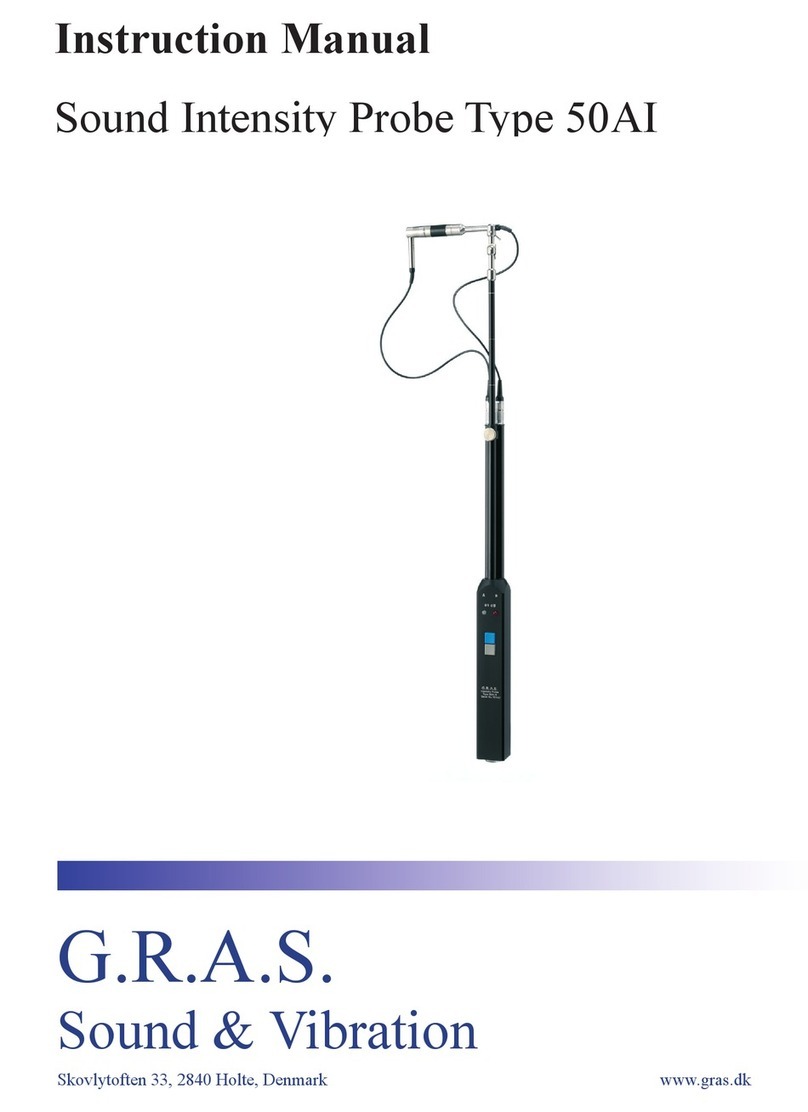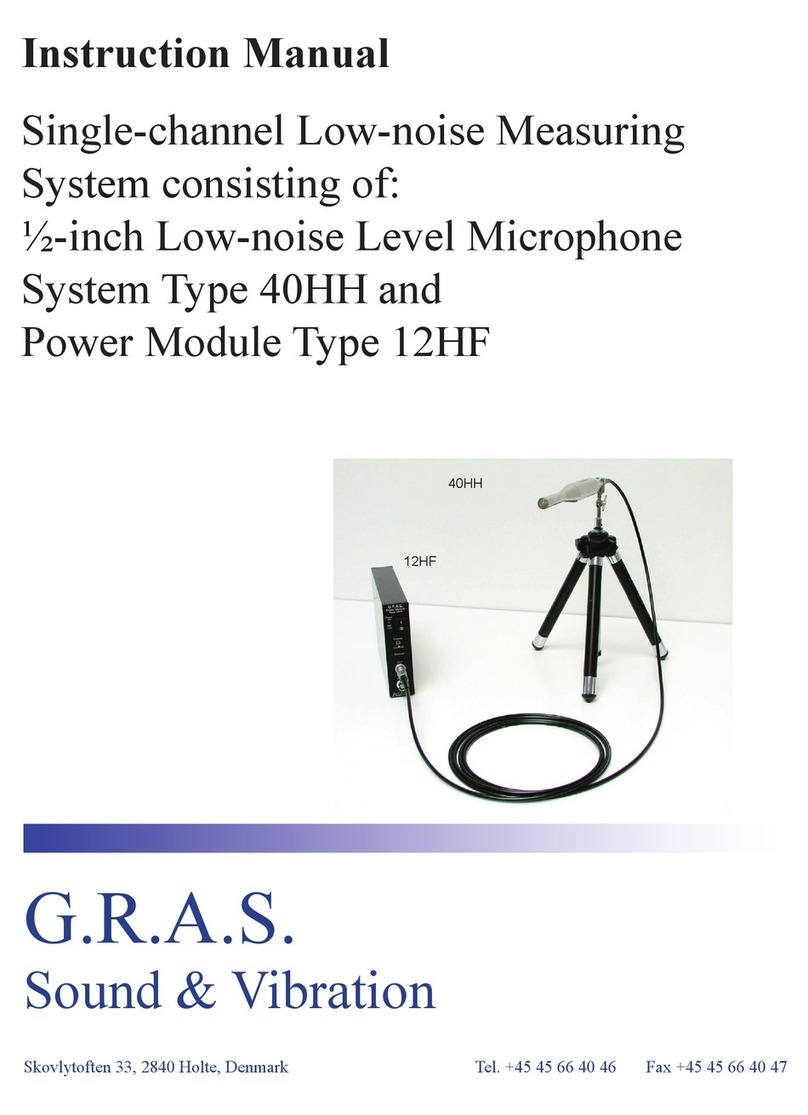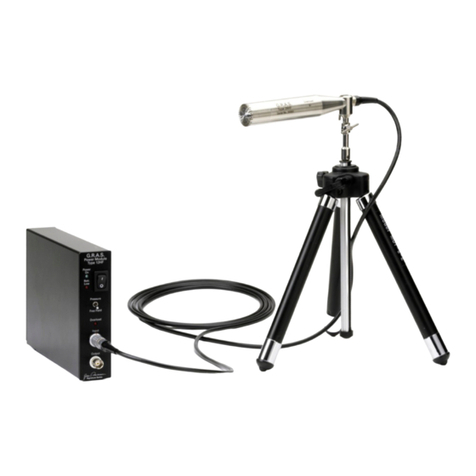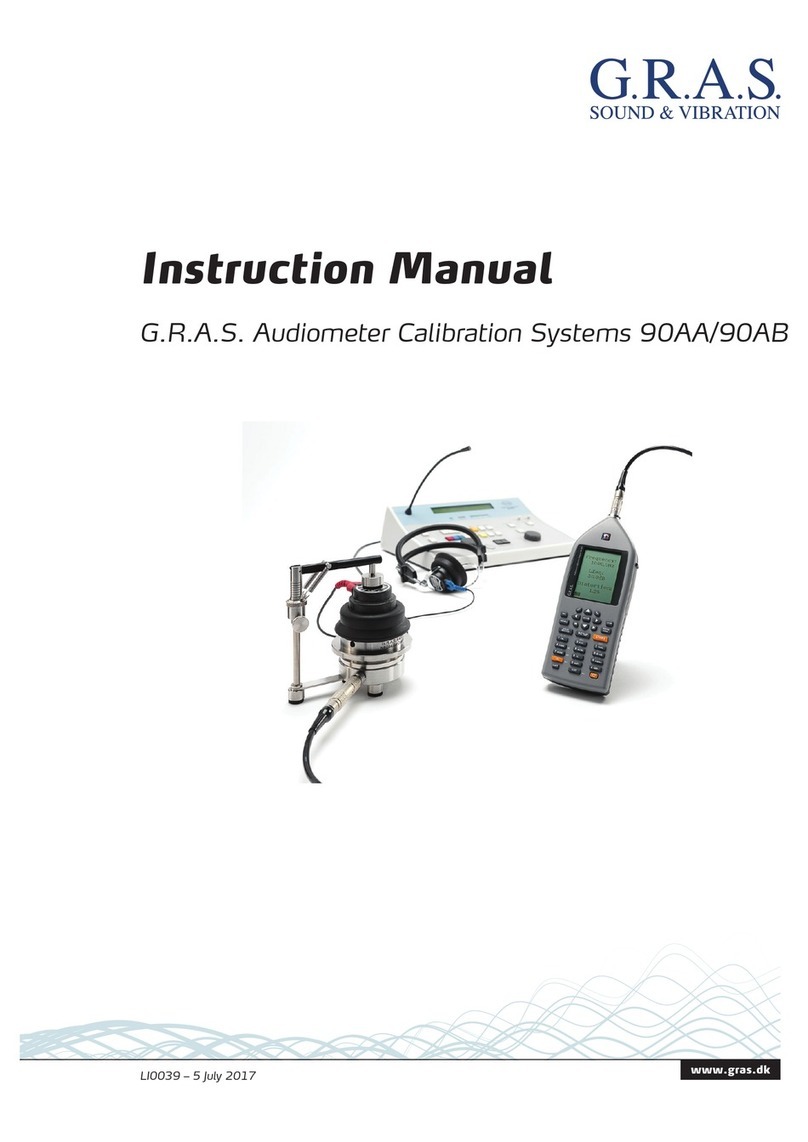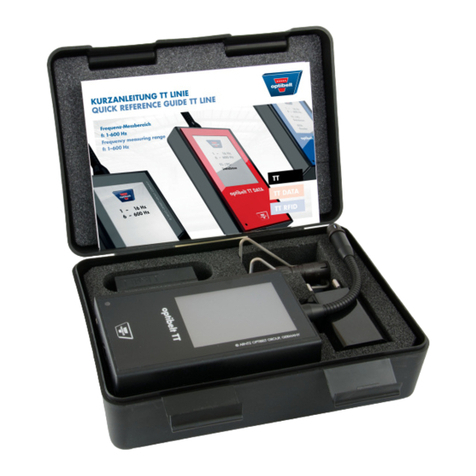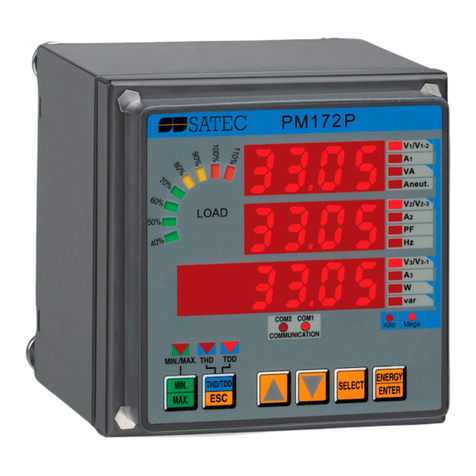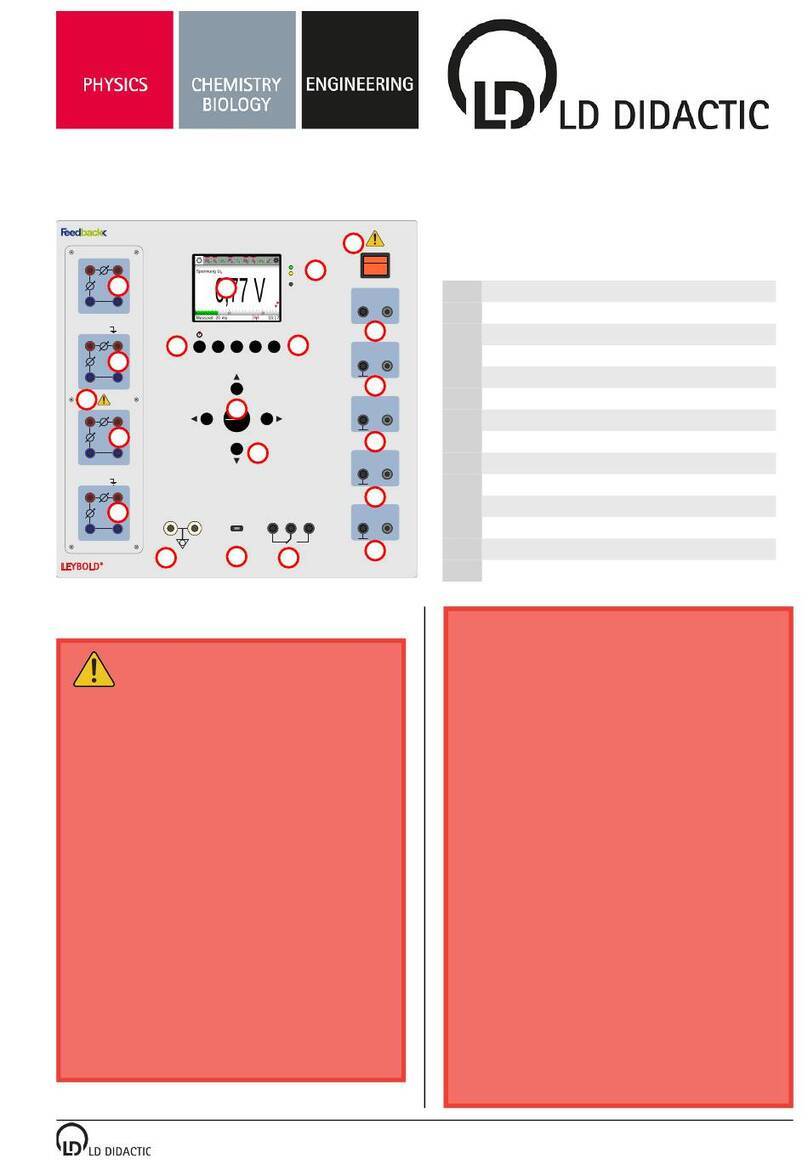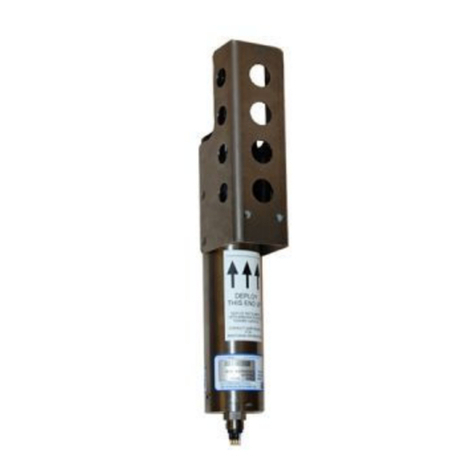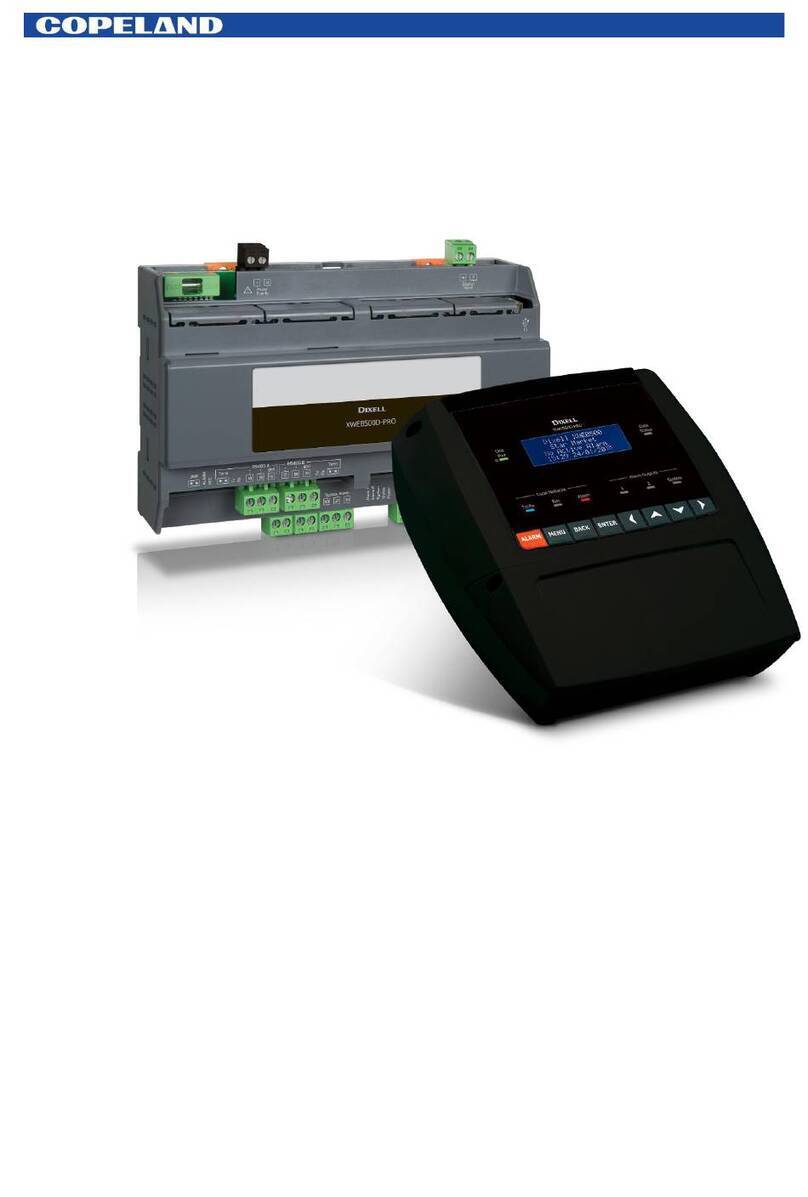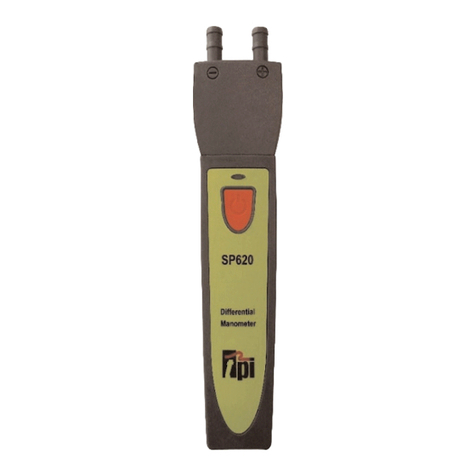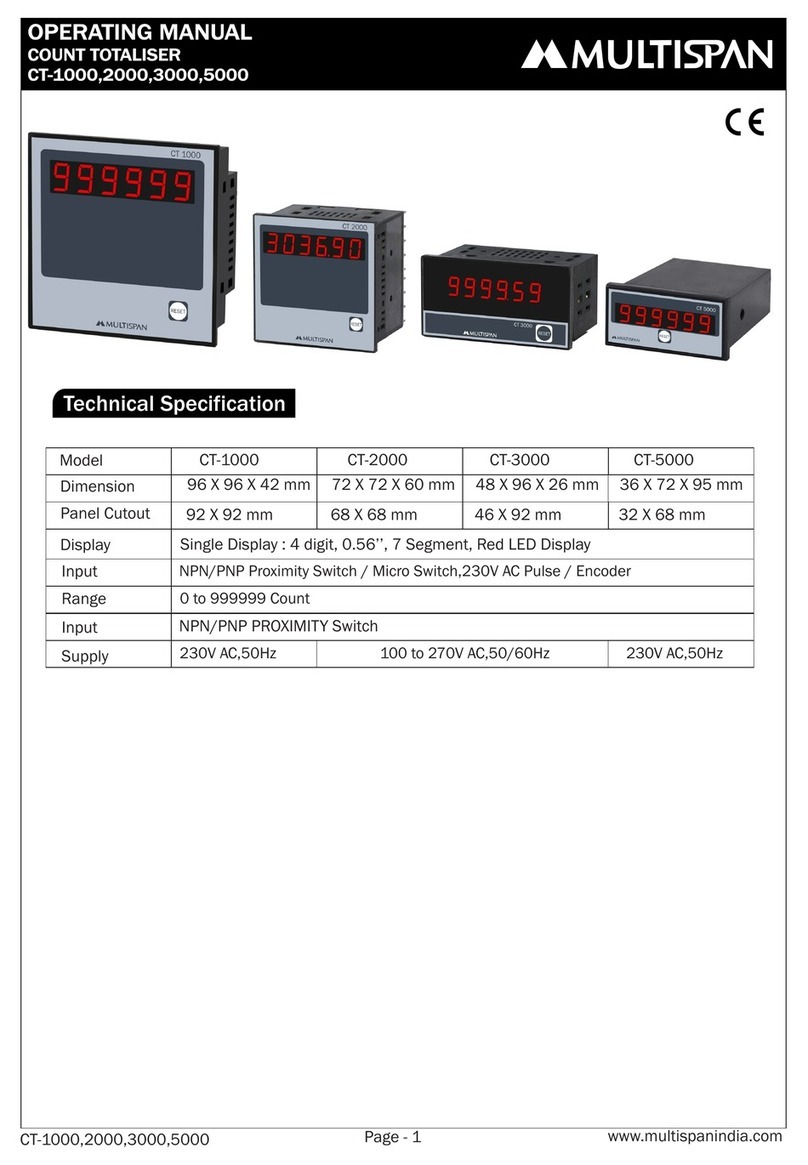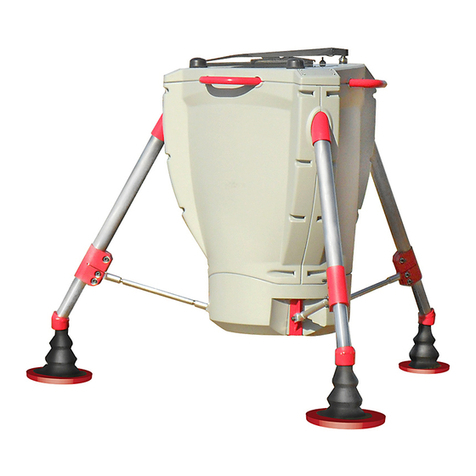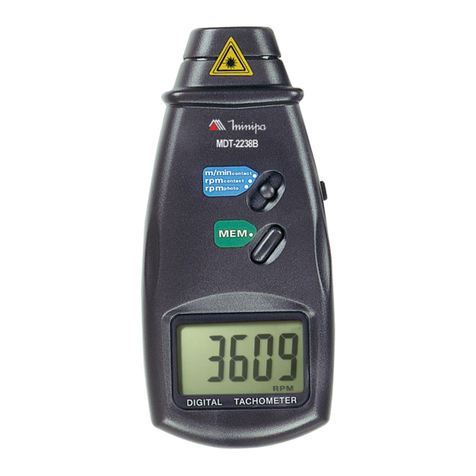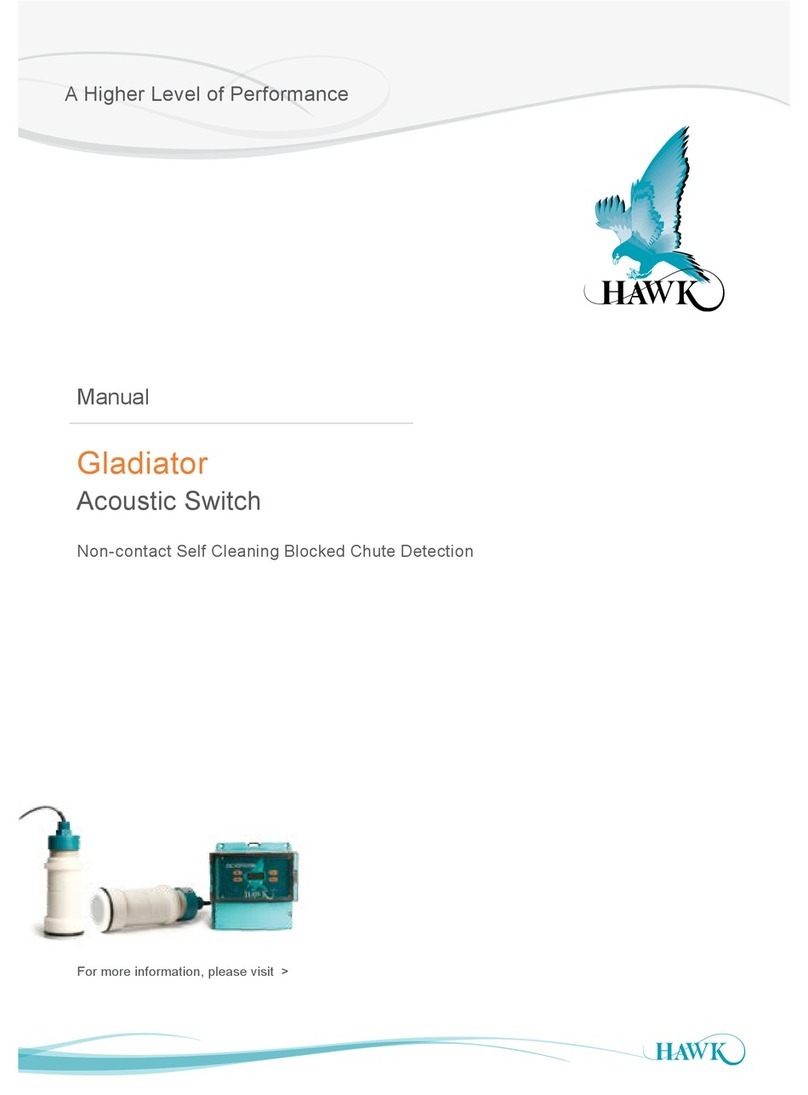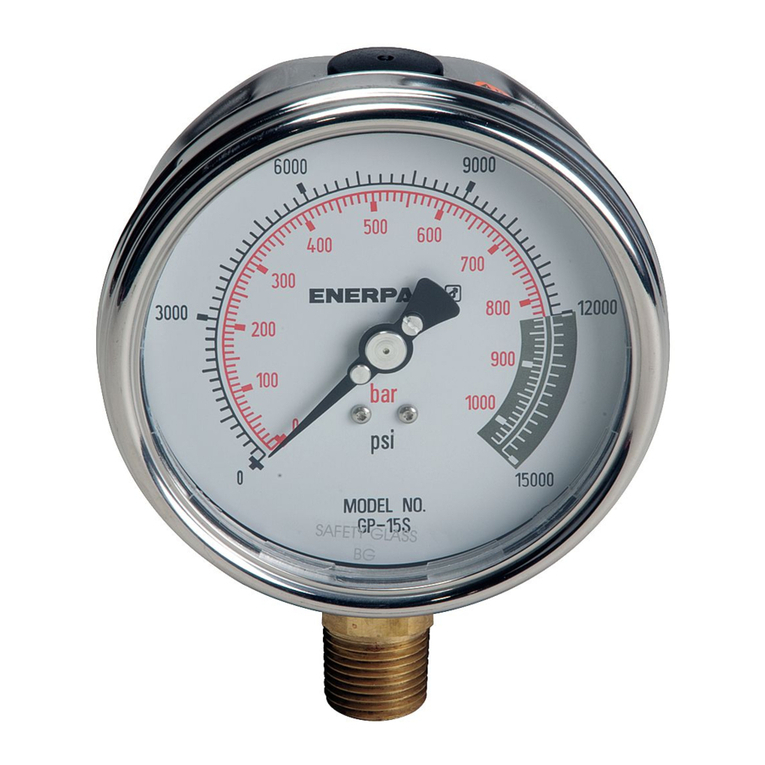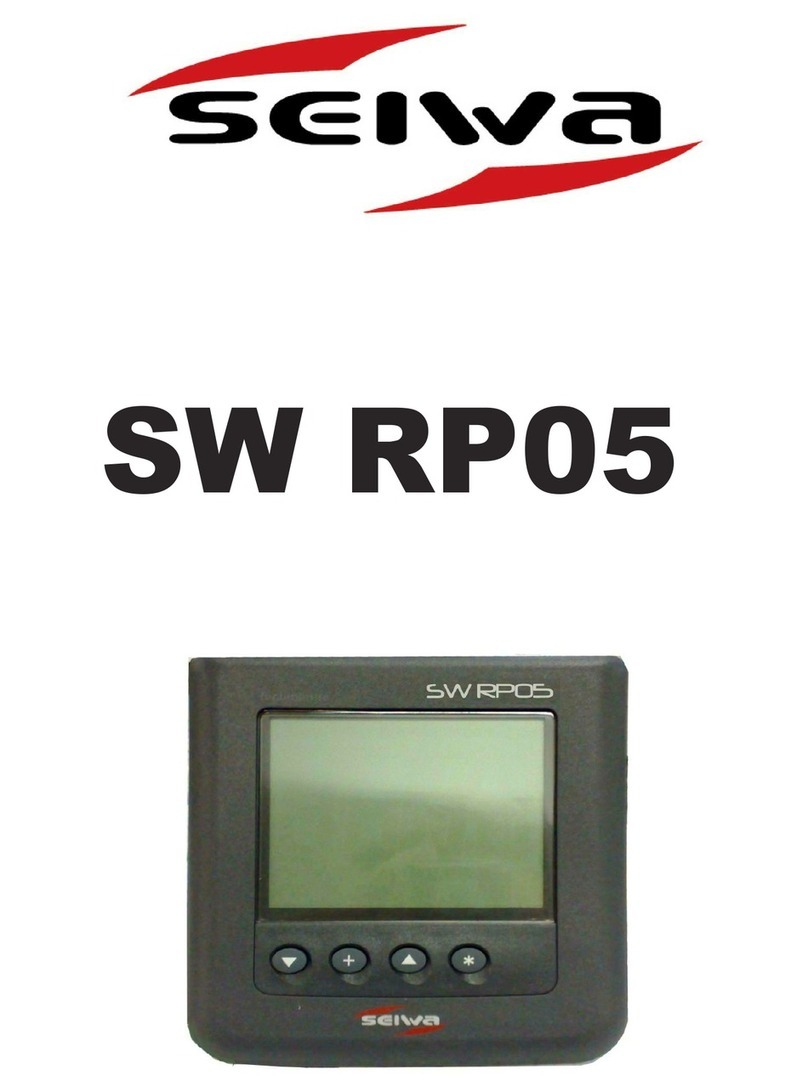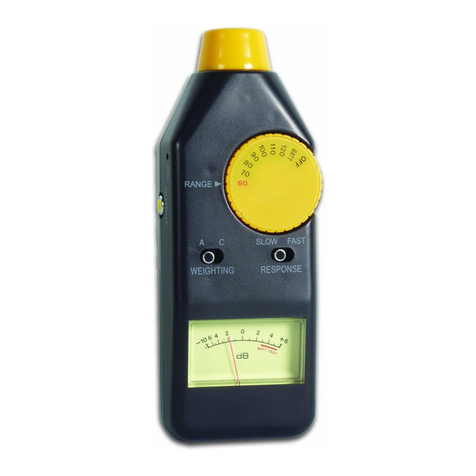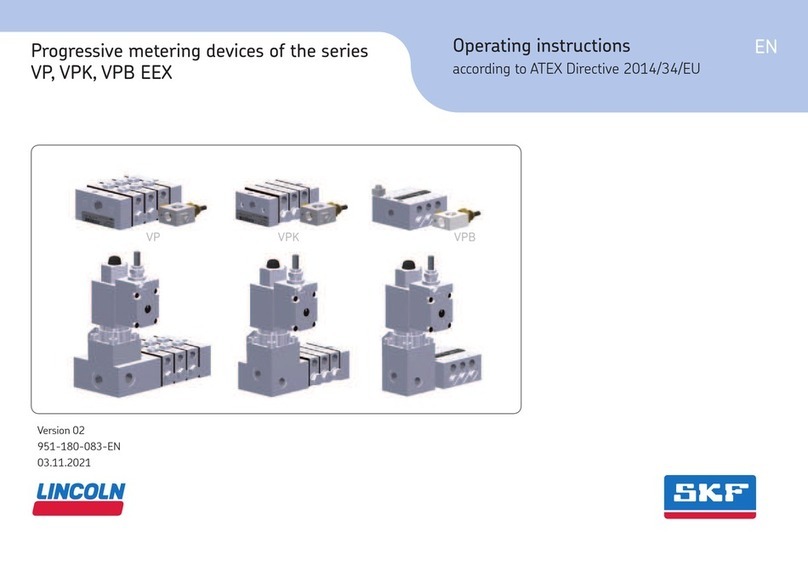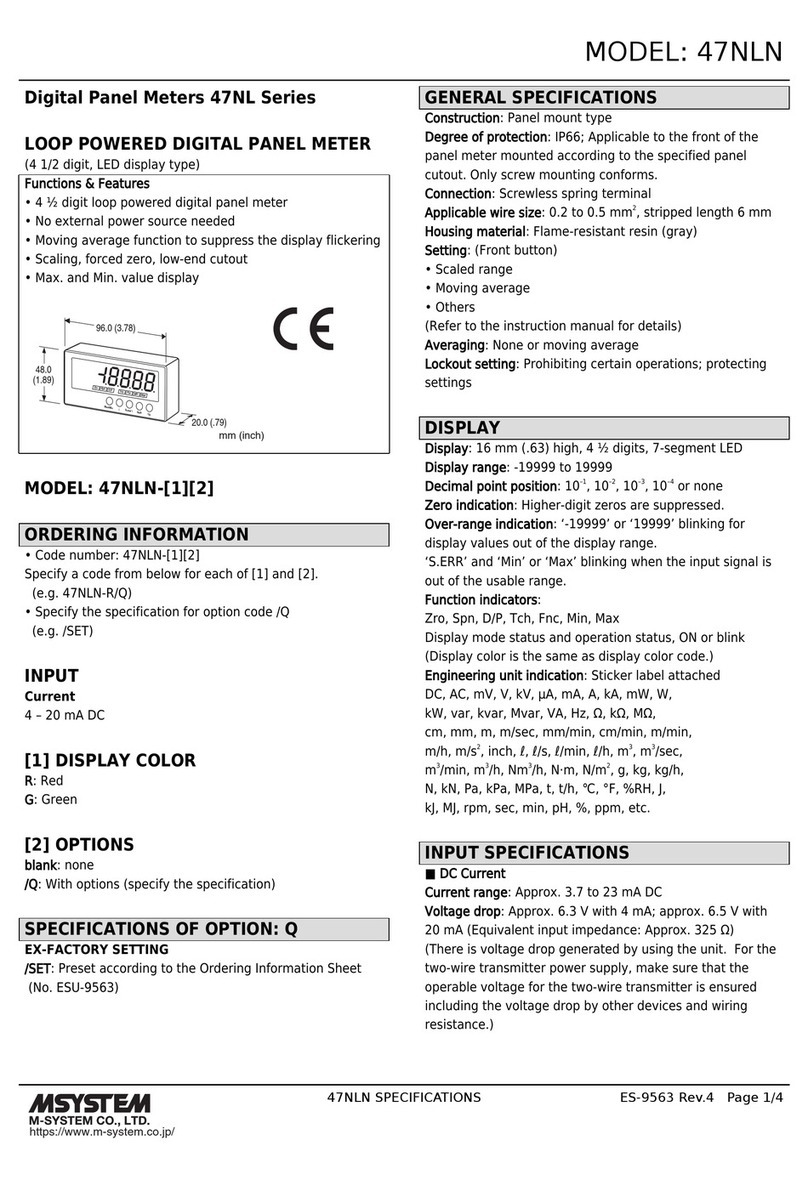G.R.A.S. 67SB User manual

www.gras.dk
LI0056 – Revision 28 May 2015
Instruction Manual
67SB Blast Probe According to ANSI S12.42

2
LI0056 – Revision 28 May 2015
Revision History
Revision Date Description
1 23 June 2011 First publication
2 20 April 2012 Revision. Added: In-situ calibration.
3 8 August 2012 Changed part number GU0212 references to GR1462.
4 28 May 2015 Tripod thread corrected to 1/4”
Copyright Notice
© 2011–2015 G.R.A.S. Sound & Vibration A/S
http://www.gras.dk
Any technical documentation that is made available by G.R.A.S. is the copyrighted work of
G.R.A.S. and is owned by G.R.A.S.
The content in this document is subject to change without notice. G.R.A.S. Sound & Vibration A/S
is not liable or responsible for any errors or inaccuracies that may appear in this document.
Trademarks
Product names mentioned in this document may be trademarks or registered trademarks of their
respective companies and are hereby acknowledged.

3
LI0056 – Revision 28 May 2015
Contents
Introduction.................................................................................. 4
The 67SB Package ........................................................................ 5
Measurement Setups ..................................................................... 6
Removing and Installing the Microphone............................................ 7
Disconnecting the Two Parts of the Tube....................................................... 7
Removing the Microphone Assembly............................................................ 8
Reinstalling the Microphone Assembly ......................................................... 9
Calibration ................................................................................. 10
In-Situ Calibration .................................................................................... 10
Separate Calibration ................................................................................ 11
Technical Specifications................................................................ 12
Typical Performance ................................................................................. 12
Dimensions and Data ............................................................................... 12
Ordering Information.................................................................... 13
Accessories ............................................................................................. 14
Calibration............................................................................................... 14
Warranty................................................................................................. 14
Service and Repairs.................................................................................. 14

4
LI0056 – Revision 28 May 2015
Introduction
The 67SB Blast Probe According to ANSI S12.42 is designed to meet the require-
ments of a blast probe suitable for high-level impulse measurements as outlined in
ANSIS12.42. The 67SB complies with ANSIS12.42 and IEC61094-1.
The 67SB consists of a sturdy aluminium tube and a flush-mounted 1/8-inch externally
polarized pressure microphone (40DP) as sensor. The tube has a 3/4 inch thread for
mounting on a tripod or similar device.
Fig. 1. The 67SB seen from above and below.
67SB Blast Probe Microphone
Serial No. XXXXXX
G.R.A.S.
Sound source
Do not cover
sensor
For removing
probe top
For removing
sensor
Top view Bottom view
1/4˝ thread
(for tripod or similar)
M2 hex screws
(for 1.5 mm hex key) for
microphone and probe
assembly
Hole for
microphone
67SB Blast Probe Microphone
Serial No. XXXXXX
G.R.A.S.
Sound source
Do not cover
sensor
For removing
probe top
For removing
sensor
7-pin female Lemo
Dot for
alignment of
calibration
adapter

5
LI0056 – Revision 28 May 2015
The 67SB Package
The 67SB Blast Probe According to ANSI S12.42 is delivered as a preassembled pack-
age. The following table list all items delivered with the 67SB. Fig. 2 shows the 67SB
in its travel case.
Included Items Part Number
Blast Probe According to ANSI S12.42 (includes microphone and
preamplifier in the probe housing, and a travel case)
67SB
1.5 mm Hex key YY0012
External Calibration Adapter GR1462
Calibration plug GR1423
Manual LI0056
Fig. 2. The 67SB in its travel case.

6
LI0056 – Revision 28 May 2015
Measurement Setups
The microphone set inside the probe is a 1/8-inch externally polarized pressure micro-
phone (40DP) and a preamplifier (26AC). The probe must be connected to a power
module or analyzer that can provide a polarization voltage of 200V to the microphone
and a supply voltage of ±60V/120V to the preamplifier. The connection is via a 7-pin
male LEMO at the rear end of the tube. The 40DP can handle a peak sound pressure of
174dB. The 67SB uses an externally polarized microphone and is not CCP compatible.
67SB Blast Probe Microphone
Serial No. XXXXXX
G.R.A.S.
Sound source
Do not cover
sensor
For removing
probe top
For removing
sensor
From preamplifier -
7-pin LEMO
G.R.A.S.
Power Module
Type 12AK
Gain
+20
+10 +30+40
+50
0
HP Dir
Lin AW
Filter
Overload
Inst. Latch
SysCh.
Adjust
Power
On
Ovl.
Reset
Low
Batt.
SignatureSeries
Output
Input
Power Module
12AK
To analyzer
PC or analyzer with hardware
and software for simulating:
an audio frequency analyzer capa-
ble of ⅓-octave band analyses
080001
67SB Blast Probe
67SB Blast Probe Microphone
Serial No. XXXXXX
G.R.A.S.
Sound source
Do not cover
sensor
For removing
probe top
For removing
sensor
From preamplifier -
7-pin LEMO
To analyzer
PC or analyzer with hardware
and software capable of:
an audio frequency analysis,
⅓-octave band analyses
polarization voltage and power for
microphone set.
080001
67SB Blast Probe
Fig. 3. Setup example with power module and analyzer.
Fig. 4. Setup example with analyzer capable of powering the microphone set.

7
LI0056 – Revision 28 May 2015
Removing and Installing the Microphone
This section describes how to remove and install the microphone, for example, when
you need to calibrate it.
The main user-accessible parts of the blast probe are shown in Fig. 5. The two tube
parts are held in place with a short M2 hex screw (item 3) and an O-ring in a recess
inside the front part (Item 1).
Disconnecting the Two Parts of the Tube
1. Loosen the short M2 hex screw (item 3).
2. Pull the two halves apart. Because of the drag provided by the O-ring (item 7),
you may have to wriggle the parts slightly while pulling. Do not use excessive
force.
4
8
23
6
5
1
7
The parts of the probe as shown in Fig. 5 are
1. Probe tube – front. 5. Probe tube – rear.
2. Long M2 hex screw (for 1.5 mm hex
key) for securing the microphone assem-
bly against the tube wall.
6. Clamp for microphone assembly.
Note: This clamp is only shown outside
the front tube for clarity; it is actually fixed
inside the tube where it holds the micro-
phone in place.
3. Short M2 hex screw for securing the
two halves of the blast probe.
7. O-ring.
4. Microphone/preamplifier assembly. 8. Hole for microphone.
Fig. 5. Exploded view of the blast probe.

8
LI0056 – Revision 28 May 2015
Removing the Microphone Assembly
The microphone is secured inside the front tube by a clamp and an M2 hex screw. When
positioned in the clamp with the M2 hex screw tightened, the microphone assembly
is properly secured. A guard ring below the protective grid ensures seating against the
inner surface and that the diaphragm is flush with the outer surface of the probe.
M-2 hex screw Clamp
Upper inner surface of probe
housing
Guard ring
Diaphragm inside the protective grid is flush
with the probe’s outer surface
To remove the microphone:
1. Use a 1.5 hex key to loosen the M2 hex screw and gently pull the microphone
assembly out. The protective grid must be clear of the tube surface (see Fig. 7).
2. Pry the microphone housing loose from the clamp and pull it out of the probe.
M2 hex screw loosened to a level below the
inner surface
When pulled all the way down, there
is sufficient clearance to pull out the
microphone assembly
Fig. 6. The microphone assembly secured by the M-2 hex screw and the clamp.
Fig. 7. The microphone assembly ready to be pulled out. Notice the clearance above the protective grid.

9
LI0056 – Revision 28 May 2015
Reinstalling the Microphone Assembly
The steps for reinstalling the microphone assembly are basically the reverse of the steps
for removing the assembly.
The diaphragm of the microphone must be flush with the outer surface of the probe tube
when mounted, as required by the ANSI S12.42 standard. The following ensures that
this requirement is met:
• The guard ring must be situated correctly on the microphone assembly. (This is
ensured by the design and during assembly at the factory.)
• The guard ring must be properly seated against the upper inner wall of the tube.
M2 hex screw securing the assembly against the upper
inner wall
Correct positioning of the guard ring ensures that
the diaphragm is flush with the surface
The guard ring seated against the inner wall
Important: The M2 hex screw should be tightened enough to secure the microphone
assembly, but do not use excessive force.
Important: Do not remove the protective grid and/or the guard ring as this may
compromise correct positioning of the diaphragm relative to the probe surface.
Fig. 8. The microphone assembly secured properly inside the probe housing.

10
LI0056 – Revision 28 May 2015
Calibration
The 67SB is calibrated in a controlled laboratory environment using traceable calibration
equipment before leaving the factory. We recommend calibration prior to use to ensure
the accuracy of your measurements. You can use any of the G.R.A.S Pistonphones
42AA and 42AP.
In-Situ Calibration
With the GR1462 External Calibration Adapter, you can calibrate the microphone in the
67SB without dismounting it. The adapter is mounted as shown in Fig. 9. An O-ring
inside the adapter ensures a proper fit over the microphone. The correction factor is
0.04 dB.
67SB Blast Probe Microphone
Serial No. XXXXXX
G.R.A.S.
Sound source
For removing
probe top
For removing
sensor
Dot for correct alignment
GR1462 (front view)
Top view of 67SB with GR1462
Side view of 67SB with GR1462
G.R.A.S.
Pistonphone
Type 42AP
Serial No. XXXXX
IEC 60942 (2003) LS
Signature Series
G.R.A.S.
Pistonphone
Type 42AP
Serial No. XXXXX
IEC 60942 (2003) LS
Signature Series
The pistonphone can be placed
directly onto the adapter
Pistonphone, e.g 42AP
Adapter GR1462
67SB
Fig. 9. The 67SB blast probe with GR1462 adapter for in-situ calibration.
Fig. 10. Pistonphone calibration of the 67SB using the adapter GR1462.

11
LI0056 – Revision 28 May 2015
Separate Calibration
You can calibrate the microphone in-situ as described on page 10, but you can also
calibrate it separately. In this case, no correction factor is needed.
To calibrate the microphone, you must remove it from the probe tube:
1. Open the blast probe as described on page 7.
2. Pull out the microphone assembly as described on page 8.
3. Mount the Calibration Adapter RA1423 in the pistonphone.
4. Place the blast probe tube next to the pistonphone. Do not attempt to remove
the microphone cable from the tube.
5. Push the microphone all the way down into the adapter so that it is sealed by
the O-ring inside the adapter.
6. Turn on the pistonphone.
G.R.A.S.
Pistonphone
Type 42AP
Serial No. XXXXX
IEC 60942 (2003) LS
Signature Series
Pistonphone 42AP
1/2” to 1/8” adapter
RA1423
67SB Blast Probe Microphone
Serial No. XXXXXX
G.R.A.S.
Blast probe -
rear end
Fig. 11. Typical calibration setup using The G.R.A.S. pistonphone 42AP.

12
LI0056 – Revision 28 May 2015
Technical Specifications
Typical Performance
The following diagram demonstrates the time domain of an impulse as measured by the
67SB. The peak measurement of 6000Pa in this example is approximately 170dB.
-2000
-1000
0
1000
2000
3000
4000
5000
6000
7000
0123456
Magnitude [Pa]
Time [ms]
Time Domain of Impulse
67SB
Dimensions and Data
Probe Dimensions
Length 410
Diameter 35
Threads
Protection Grid M3.175 x 0.2
Blast probe mounting ¼” thread
Weight
67SB only 650 g
67SB with case 2750 g
Fig. 12. Typical performance, time domain response of 170 dB impulse.

13
LI0056 – Revision 28 May 2015
Data was collected in a temperature of 23°C (±3°C) and in a relative humidity of 60%
±20%.
Frequency response for the set
±1.0dB 10Hz – 30kHz
±2.0dB 6.5Hz – 140kHz
Resonance frequency
90° phase shift 160kHz
Nominal open-circuit sensitivity
at 250Hz 1mV/Pa
Dynamic range
Upper limit (3% distortion) 174dB re. 20µPa
Thermal noise 44dB(A) re. 20µPa
Effective front volume
Nominal at 250Hz 0.1mm3
Temperature range
–30 °C to +70°C
Temperature coefficient (250Hz)
–30°C to +70°C 0.01dB/°C
Static-pressure coefcient
250Hz at 25°C –0.01dB/kPa
Output impedance
Typical 75Ω
Humidity (non-condensing)
Range: 0 – 95% RH
Influence (250 Hz): <0.1 dB (0 - 100 % RH)
Ordering Information
Included Items Part Number
Blast Probe According to ANSI S12.42 (includes microphone and
preamplifier in the probe housing, and a travel case)
67SB
1.5 mm Hex key YY0012
Calibration plug GR1423
External Calibration Adapter GR1462
Manual LI0056

14
LI0056 – Revision 28 May 2015
Accessories
The following items are optional for the 67SB and can be ordered separately.
Item Part Number
1-Channel LEMO Power Module with gain, filters, and SysCheck
generator
12AK
3 m LEMO extension cable AA0008
10m LEMO extension cable AA0009
Intelligent Pistonphone 42AP
Calibration
Before leaving the factory, all G.R.A.S. products are calibrated in a controlled laboratory
environment using traceable calibration equipment. We recommend a yearly recalibration
at minimum, depending on the use, measurement environment, and internal quality
control programs. We recommend calibration prior to each use to ensure the accuracy of
your measurements.
Warranty
All G.R.A.S. products are made of high-quality materials that will ensure life-long
stability and robustness. The 67SB is delivered with a 5-year warranty. Damaged
diaphragms in microphones can be replaced.The warranty does not cover products that
are damaged due to negligent use, an incorrect power supply, or an incorrect connection
to the equipment.
Service and Repairs
All repairs are made at G.R.A.S. International Support Center located in Denmark. Our
Support Center is equipped with the newest test equipment and staffed with dedicated
and highly skilled engineers. Upon request, we make cost estimates based on fixed
repair categories. If a product covered by warranty is sent for service, it is repaired free
of charge, unless the damage is the result of negligent use or other violations of the
warranty. All repairs are delivered with a service report, as well as an updated calibration
chart.
G.R.A.S. Sound & Vibration continually strives to improve the quality of our products for our customers;
therefore, the specifications and accessories are subject to change.
WEEE directive:
2002/96/EC
CE marking directive:
93/68/EEC
Manufactured to conform with:
RoHS directive:
2002/95/EC
Table of contents
Other G.R.A.S. Measuring Instrument manuals
